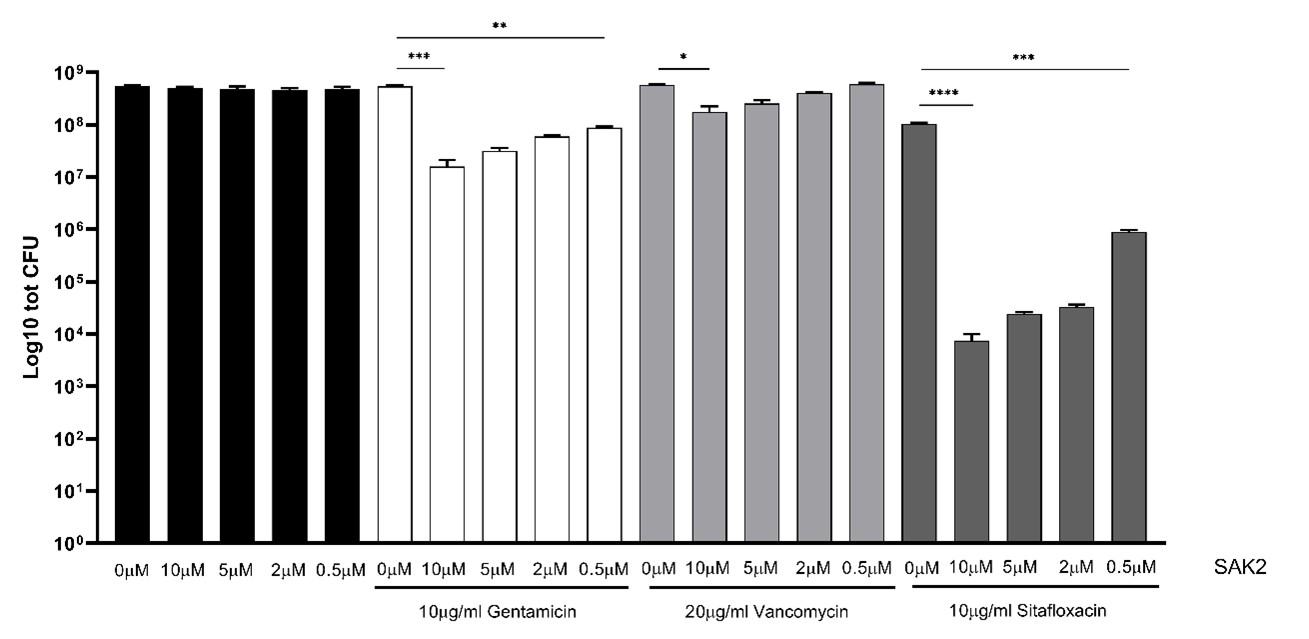A combination enzybiotic and antivirulence approach for the treatment of S. aureus fracture-related infections
Background
Fracture-related infection (FRI) is one of the most serious and common complications associated with the surgical fixation of bone fractures. Staphylococcus aureus is a pathogen commonly found in FRI and possess several key virulence factors that support its ability to cause acute and chronic infection. In the presence of human plasma, S. aureus possess virulence factors that enable it to subvert host coagulation pathways to its advantage by encapsulating itself into a pseudocapsule, which protect the bacteria from host defense cells and antimicrobial therapy. Breaking down the protective pseudocapsule will increase the activity of antimicrobials against infecting bacteria, but also increase access of host defense cells to phagocytose the bacteria.
Goal
Determine whether bacteriophages derived enzymes have a better antimicrobial activity compared to antibiotics using a previously established Staphylococcal abscesses communities (SACs) model.
Results
Staphylokinase (SAK2) treatment in association with antibiotics shows a higher reduction on the final CFU quantification when compared to antibiotics only. Further investigations are ongoing to evaluate whether different enzybiotics can be combined for the treatment of an infection into a mouse model.
-
PublicationFeng W, Chittò M, Moriarty TF, Li G, Wang X. Targeted drug delivery systems for eliminating intracellular bacteria. Macromol Biosci. 2022;epub Oct 3:e2200311 https://doi.org/10.1002/mabi.202200311


